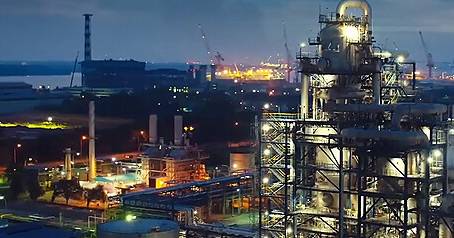Exploring the Rich History and Use of Indigo Blue Fabric Dye in Chinese Textiles
The Rich Heritage of China Indigo Blue Fabric Dye
Indigo blue, a vibrant hue that evokes images of deep oceans and tranquil skies, has a long and storied history in fabric dyeing, especially within Chinese culture. The practice of dyeing textiles with indigo has deep roots that intertwine art, tradition, and craftsmanship, resulting in fabrics that are not only beautiful but steeped in cultural significance.
The usage of indigo dye in China can be traced back thousands of years, with some of the earliest records found during the Han Dynasty (206 BC – 220 AD). The dye is primarily derived from the leaves of the indigo plant, known scientifically as *Indigofera tinctoria*. The process of extracting indigo was labor-intensive, requiring the leaves to be fermented and oxidized to produce the rich blue dye. This meticulous craft transformed simple textiles into exquisite pieces of art.
The Rich Heritage of China Indigo Blue Fabric Dye
The Batik and Tie-Dye techniques are two of the most noteworthy traditional methods used in conjunction with indigo dye. In Batik, wax is applied to fabric in intricate patterns, which resist the dye, resulting in striking designs once the wax is removed. Tie-Dye involves tying sections of the fabric to create patterns, allowing for unpredictability and uniqueness in each piece. These techniques showcase not only the skill of the artisans but also their creativity and connection to nature.
china indigo blue fabric dye

Regions like Jiangsu, Zhejiang, and Guangdong became renowned for their indigo textile production, with families passing down their dyeing techniques from generation to generation. The local practices varied, incorporating distinct elements influenced by regional cultures. For instance, the indigo textiles from the Dong and Miao ethnic groups in southern China are particularly celebrated for their exquisite patterns and craftsmanship, often displaying complex designs that represent their cultural heritage and folklore.
With the onset of the Industrial Revolution and globalization, synthetic dyes began to overshadow traditional indigo dyeing practices. However, there has been a resurgence of interest in natural dyes and sustainable fashion in recent years. Consumers are increasingly drawn to the authenticity and ecological benefits associated with natural dyes, rekindling the appreciation for indigo and its traditional methods. Artisans and designers have collaborated to revive these ancient techniques, bringing an appreciation of hand-crafted textiles back into the modern marketplace.
The contemporary fashion scene is now witnessing a fusion of traditional indigo techniques with modern designs, breathing new life into this ancient craft. Designers experiment with various fabrics, cuts, and combinations of hues, ensuring that indigo blue remains relevant in today’s fashion landscape. Moreover, the unique color variations inherent in natural dyeing processes add a sense of individuality to each piece, making them not just garments but wearable art.
In conclusion, the legacy of China’s indigo blue fabric dye is a testament to the enduring power of tradition in the face of modernization. It serves as a reminder of the intricate relationship between nature, art, and humanity, standing as a vibrant symbol of cultural heritage. As we move forward, embracing sustainable practices and embracing the past will ensure that the rich history of indigo dye continues to flourish and inspire future generations.
-
The Timeless Art of Denim Indigo Dye
NewsJul.01,2025
-
The Rise of Sulfur Dyed Denim
NewsJul.01,2025
-
The Rich Revival of the Best Indigo Dye
NewsJul.01,2025
-
The Enduring Strength of Sulphur Black
NewsJul.01,2025
-
The Ancient Art of Chinese Indigo Dye
NewsJul.01,2025
-
Industry Power of Indigo
NewsJul.01,2025
-
Black Sulfur is Leading the Next Wave
NewsJul.01,2025

Sulphur Black
1.Name: sulphur black; Sulfur Black; Sulphur Black 1;
2.Structure formula:
3.Molecule formula: C6H4N2O5
4.CAS No.: 1326-82-5
5.HS code: 32041911
6.Product specification:Appearance:black phosphorus flakes; black liquid

Bromo Indigo; Vat Bromo-Indigo; C.I.Vat Blue 5
1.Name: Bromo indigo; Vat bromo-indigo; C.I.Vat blue 5;
2.Structure formula:
3.Molecule formula: C16H6Br4N2O2
4.CAS No.: 2475-31-2
5.HS code: 3204151000 6.Major usage and instruction: Be mainly used to dye cotton fabrics.

Indigo Blue Vat Blue
1.Name: indigo blue,vat blue 1,
2.Structure formula:
3.Molecule formula: C16H10N2O2
4.. CAS No.: 482-89-3
5.Molecule weight: 262.62
6.HS code: 3204151000
7.Major usage and instruction: Be mainly used to dye cotton fabrics.

